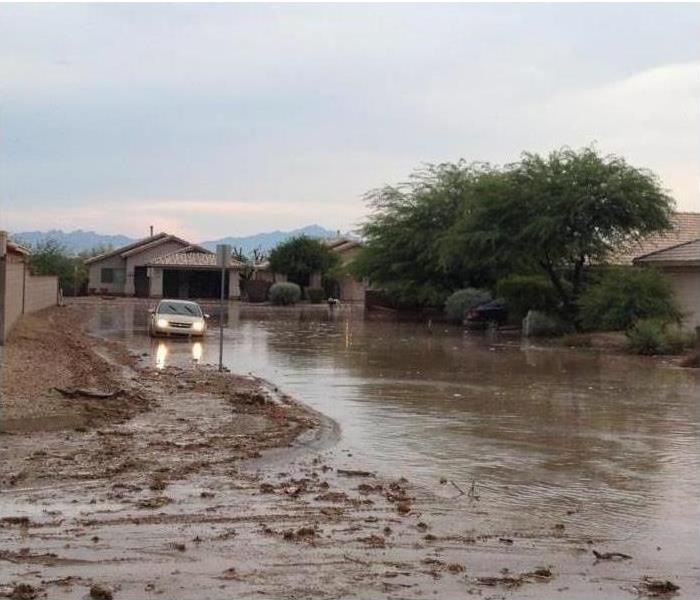Arizona Monsoon Season - Why do we have them?
2/4/2019 (Permalink)
The Arizona Monsoon is a well-defined meteorological event (technically called a meteorological 'singularity') that occurs during the summer throughout the southwest portion of North America.
During the winter time, the primary wind flow in Arizona is from the west or northwest—from California and Nevada. As we move into the summer, the winds shift to a southerly or southeasterly direction. Moisture streams northward from the Pacific Ocean and the Gulf of Mexico. This shift produces a radical change in moisture conditions statewide.
Such a change, together with daytime heating, is the key to the Arizona monsoon. This wind shift is the result of two meteorological changes:
- The movement northward from winter to summer of the huge upper air subtropical high pressure cells, specifically the so-called Bermuda High (H).
- In addition, the intense heating of the desert creates rising air and surface low pressure (called a thermal low) in the Mohave (L).
These two features combine to create strong southerly flow over Arizona. The southerly winds push moisture north-ward from Mexico. The exact source region for the moisture of the Arizona monsoon is unknown.
Researchers have proposed the Gulf of Mexico and/or the Gulf of California as the source regions but conclusive evidence has so far been elusive.This has lead to the creation of large data-collecting efforts and research programs such as SWAMP, the Southwest Area Monsoon Project .






 24/7 Emergency Service
24/7 Emergency Service
